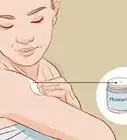This article was medically reviewed by Kimberly Tan. Kimberly Tan is the Founder & CEO of Skin Salvation, an acne clinic in San Francisco. She has been a licensed esthetician for over 15 years and is an expert in mainstream, holistic, and medical ideologies in skin care. She has worked directly under Laura Cooksey of Face Reality Acne Clinic and studied in-person with Dr. James E. Fulton, Co-creator of Retin-a and pioneer of acne research. Her business blends skin treatments, effective products, and education in holistic health and sustainability.
There are 11 references cited in this article, which can be found at the bottom of the page.
This article has been viewed 186,582 times.
As we age, our skin naturally loses some of its softness and vibrancy. However, there are a number of simple lifestyle changes that can help rejuvenate the skin, such as wearing sunscreen and getting more sleep. Applying facial masks consisting of exfoliating ingredients like lemon and green tea can also help rejuvenate the skin.
Steps
Developing a Revitalizing Skin Care Routine
-
1Know your skin type. How you care for your skin will depend on your particular skin type. There are five basic skin types.[1]
- Normal skin is clear and not particularly sensitive.
- Dry skin is flaky or rough.
- Sensitive skin may burn or itch when you apply certain products.
- Combination skin is dry in some areas and oily in others.
-
2Use a gentle cleanser. Rise your face with the cleanser, but don’t scrub. Rinse with warm water and pat dry.[2]
- If you find a particular cleanser dries out your face, experiment with different brands until you find one that works. A cleanser without alcohol or fragrance will work best with dry skin.
- If you have oily skin, use an oil-free, non-comedogenic foaming cleanser.
- For sensitive skin, choose a hypoallergenic cleanser that doesn’t contain unnecessary additives.
- Don’t over wash your skin. Over washing dries out your skin. Unless you are exercising, you shouldn’t need to wash your face more than once a day. In the morning, wash your face with lukewarm water. At night, apply your gentle cleanser and moisturizer.[3]
- Remove your makeup at night. Makeup clogs your pores and can lead to acne. Remove it each night before bed using a gentle cleanser.
Advertisement -
3Apply toner. Skin toners help soak up oil and remove dirt. They should be applied before moisturizers.[4]
- Begin by applying a gentle toner in after washing your face in the morning and the evening. Apply the toner to a cotton ball and gently rub the toner onto your face in small circles. Repeat the process with new cotton balls until you no longer see dirt on the cotton ball after you apply it to your face.
-
4Apply an exfoliator. Exfoliators remove dead skin cells. They should only be used two-to-four times a week since your skin needs time to regenerate. Mechanical exfoliators use small, rough particles to sand away the outer layer of your skin.[5] They are best for oily skin. Chemical exfoliators increase your cellular turnover rate to slough off the dead skin. Some chemical exfoliators, such as those with high concentration of vitamin C, may not be appropriate for dry or sensitive skin.[6]
- If you’re using a mechanical exfoliators, gently rub your face in small circles. Don't apply a lot of pressure—just enough so you can feel the rough surface of the exfoliator.
- If you’re using a chemical exfoliator, apply a small five drops to your skin and let it soak in. Do not rinse off the exfoliator, but remember to apply moisturizing after the exfoliator has soaked into your skin.[7]
-
5Apply moisturizer. Whether your skin is normal, dry, or oily, it needs moisture. Choose an oil-free moisturizing to avoid blocking your pores.[8]
- Choose a moisturizing the contains an SPF of at least 30.[9]
- If your skin is oily, use a noncomedogenic lotion-based moisturizing instead of a cream to avoid clogging your pores.
- If you skin is very dry, choose a moisturizing that contains hyaluronic acid and Niacinamide, both of which help reduce water loss. Niacinamide can also help to remove a tan from the face.
- If you have sensitive skin, choose a moisturizing that contains green tea, rose, or chamomile.[10]
- Apply moisturizing twice a day: when you wake up and before you go to sleep.
- Apply the moisturizer while your skin is still damp.
- Apply moisturizing every day for the best results.
Applying Moisturizing Masks
-
1Make a honey and lemon skin rub. Lemon juice is an excellent skin rejuvenator that helps reduce age spots. The vitamin C in lemon juice also helps decrease free radical damage.[11]
- Cut a lemon in half and apply a few drops of honey to the freshly cut side.
- Apply the lemon directly to your skin and rub it in a gentle circular motion for approximately ten minutes.
- Repeat the lemon rub once or twice a week.
-
2Make a hydrating cucumber face mask. Cucumber is full of water and antioxidants, both of which can help rejuvenate your skin.[12]
- Mix two teaspoons of grated cucumber with ½ cup of yogurt.
- Apply the mixture to your face and neck and let it stand for twenty minutes.
- Rinse off the mask with warm water.
- Apply the mask twice a week.
-
3Make an exfoliating papaya mask. Papaya contains vitamins A, C, and E, all of which exfoliate and soften the skin.[13]
- Mix two tablespoons of papaya with one tablespoon of honey and ½ teaspoon of lemon juice
- Apply the mixture to your face and let it stand for fifteen minutes.
- Risk off the mask with warm water and finish by applying cool water to your face.
- Apply the mask once a week.
-
4Make a rejuvenating green tea mask. Green tea is full of antioxidants that can help prevent and repair sun damage.[14]
- Mix ½ teaspoon of lemon juice with two tablespoons of green tea.
- Apply the mixture to your face and let it stand for twenty minutes.
- Rinse off the mask with warm water.
Attaining Glowing Skin
-
1Adopt healthy habits. The daily habits you engage in have a large impact on how your skin looks. By maintain a routine of healthy habits, you can ensure that your skin stays healthy throughout the year.[15]
- Drink eight glasses of water everyday to help keep your skin soft and supple.
- Get seven-to-nine hours of sleep a night since sleep helps to rejuvenate your skin.
-
2
-
3Change your lifestyle. To achieve glowing skin, you need to take care your body. That can mean changing your lifestyle to rid yourself of harmful substances or adopt healthy practices.[18]
- Drink less alcohol and quit smoking as both of these substances can dry out your skin and accelerates signs of aging.
- Exercise for thirty minutes daily to boost your circulation and activate naturally-occurring moisturizers in your skin.[19]
- If you hate going to the gym, try yoga.
-
4Ask your doctor about vitamin A. Prescription vitamin A treatments such as Tretinoin can help rejuvenate aging skin. Vitamin A is especially useful for skin conditions such as acne, eczema, and psoriasis.[20]
- Vitamin A treatments are also available over-the-counter as Retinol.
-
5Ask your doctor about Botox. Botox is typically reserved for dynamic wrinkles and requires that you visit a dermatologist for a shot. Dynamic wrinkles are wrinkles that appear when you’re moving your face, such as when you smile or frown.[21]
- Botox is only available as a prescription from your doctor.
-
6Ask your doctor about resurfacing procedures. These more elaborate procedures include laser resurfacing and photo rejuvenation performed by a dermatologist. These procedures can help restore skin that has been damaged by scars and blotches.[22] [23]
- Most doctors will not recommend these procedures to people without severe skin damage since they are very costly and carry some risk of further damaging the skin.
Treating Your Whole Body
-
1
-
2Exfoliate regularly. Before getting into the shower, wipe your body with a loofah. This will remove dead skin cells.[26] Make sure to wipe your entire body. In the shower, use a pumice stone to rub your feet and any other rough areas of skin, such as your elbows. For the rest of your body, use a body brush to gently rub your skin. At the end of your shower, turn the water as cold as you can stand. This will close your pores.[27]
- When you get out of the shower, dry your body by patting it with a towel. Avoid rubbing your skin aggressively with a towel.
-
3Moisturize your whole body daily. After patting your skin dry, apply a gentle moisturizing to your entire body. Don’t forget about the bottoms of your feet, your elbows, and your hands.
Expert Q&A
-
QuestionHow do I keep my skin looking rejuvenated?
 Kimberly TanKimberly Tan is the Founder & CEO of Skin Salvation, an acne clinic in San Francisco. She has been a licensed esthetician for over 15 years and is an expert in mainstream, holistic, and medical ideologies in skin care. She has worked directly under Laura Cooksey of Face Reality Acne Clinic and studied in-person with Dr. James E. Fulton, Co-creator of Retin-a and pioneer of acne research. Her business blends skin treatments, effective products, and education in holistic health and sustainability.
Kimberly TanKimberly Tan is the Founder & CEO of Skin Salvation, an acne clinic in San Francisco. She has been a licensed esthetician for over 15 years and is an expert in mainstream, holistic, and medical ideologies in skin care. She has worked directly under Laura Cooksey of Face Reality Acne Clinic and studied in-person with Dr. James E. Fulton, Co-creator of Retin-a and pioneer of acne research. Her business blends skin treatments, effective products, and education in holistic health and sustainability.
Licensed Esthetician Wear sunscreen whenever you go outside to protect yourself from discoloration or hyperpigmentation.
Wear sunscreen whenever you go outside to protect yourself from discoloration or hyperpigmentation.
References
- ↑ http://www.webmd.com/beauty/ss/slideshow-skincare-routine
- ↑ http://www.webmd.com/beauty/ss/slideshow-skincare-routine
- ↑ http://www.webmd.com/beauty/ss/slideshow-skincare-routine
- ↑ http://oureverydaylife.com/use-toner-face-27575.html
- ↑ Kimberly Tan. Licensed Esthetician. Expert Interview. 28 August 2019.
- ↑ http://www.everydayhealth.com/skin-and-beauty/skin-care-101/whats-an-exfoliant.aspx
- ↑ http://www.labmuffin.com/2015/11/how-to-exfoliate-2-all-about-chemical-exfoliants/
- ↑ http://www.webmd.com/beauty/ss/slideshow-skincare-routine
- ↑ https://www.aad.org/media/stats/prevention-and-care/sunscreen-faqs
- ↑ https://www.mindbodygreen.com/0-5257/3-MustHave-Herbs-for-Skincare.html
- ↑ http://www.top10homeremedies.com/home-remedies/home-remedies-for-skin-rejuvenation.html
- ↑ http://www.top10homeremedies.com/home-remedies/home-remedies-for-skin-rejuvenation.html
- ↑ http://www.top10homeremedies.com/home-remedies/home-remedies-for-skin-rejuvenation.html
- ↑ http://www.top10homeremedies.com/home-remedies/home-remedies-for-skin-rejuvenation.html
- ↑ http://www.readersdigest.ca/health/beauty/8-ways-naturally-rejuvenate-your-skin-spring/
- ↑ Kimberly Tan. Licensed Esthetician. Expert Interview. 28 August 2019.
- ↑ http://www.readersdigest.ca/health/beauty/8-ways-naturally-rejuvenate-your-skin-spring/
- ↑ http://www.readersdigest.ca/health/beauty/8-ways-naturally-rejuvenate-your-skin-spring/
- ↑ http://www.readersdigest.ca/health/beauty/8-ways-naturally-rejuvenate-your-skin-spring/
- ↑ https://www.realself.com/question/whats-best-skin-rejuvenation-treatment
- ↑ https://www.realself.com/question/whats-best-skin-rejuvenation-treatment
- ↑ Kimberly Tan. Licensed Esthetician. Expert Interview. 28 August 2019.
- ↑ https://www.realself.com/question/whats-best-skin-rejuvenation-treatment
- ↑ Kimberly Tan. Licensed Esthetician. Expert Interview. 28 August 2019.
- ↑ http://www.webmd.com/beauty/ss/slideshow-skincare-routine
- ↑ Kimberly Tan. Licensed Esthetician. Expert Interview. 28 August 2019.
- ↑ http://www.sheknows.com/beauty-and-style/articles/803596/how-to-exfoliate-your-skin
About This Article
To rejuvenate your skin, follow a 4-step process of cleansing, exfoliating, toning, and moisturizing. To start, rinse your face with warm water and a gentle cleanser that will remove oils without drying out your skin. Once your skin is clean, gently rub an exfoliating cream on your skin to remove any dead skin cells. Just make sure you only exfoliate 2-4 times a week since your skin needs time to regenerate afterward. After you rinse off the exfoliant, dip a cotton ball in toner and apply it to your face to soak up oil and remove dirt. This can be repeated every morning and evening. Finally, apply a moisturizer to keep your skin soft and hydrated. If you have oily skin, choose a noncomedogenic lotion-based moisturizer to prevent clogged pores. Alternatively, if you have dry skin, choose one with hyaluronic acid and niacinamide, which reduces water loss. To learn how to eat a healthy diet to rejuvenate your skin, read on!
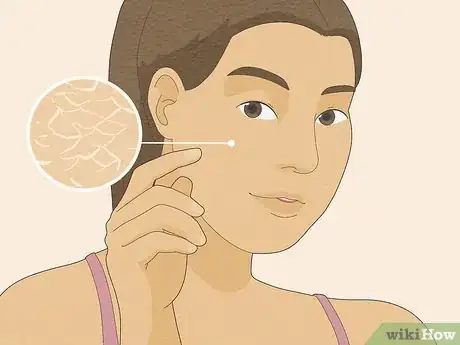
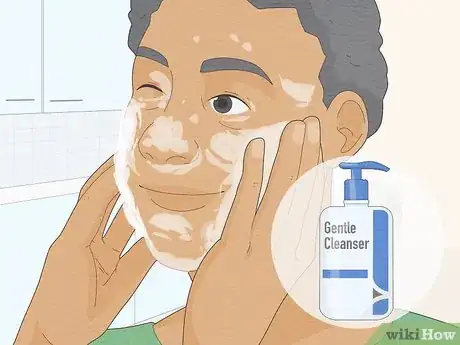
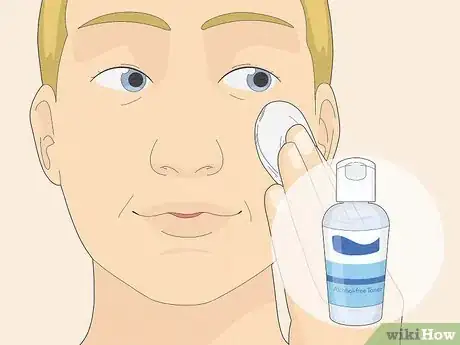
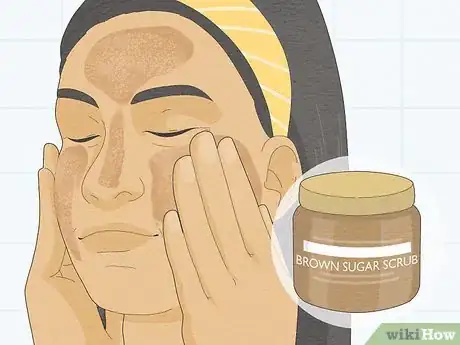

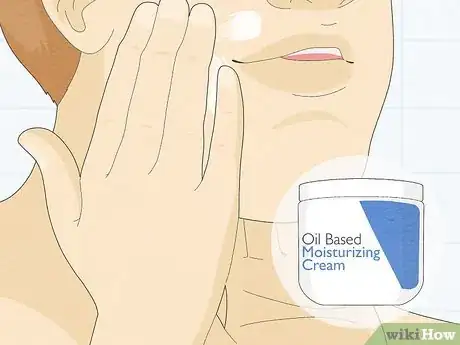

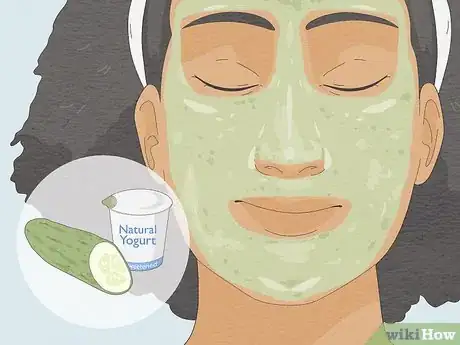
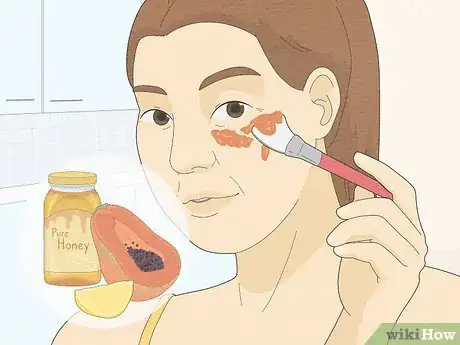

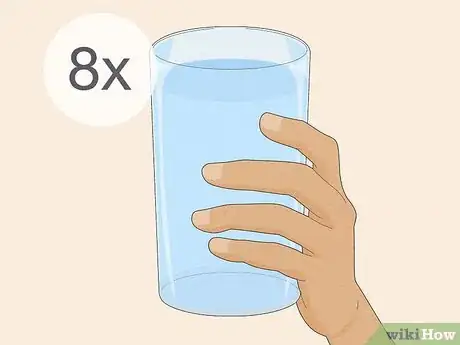

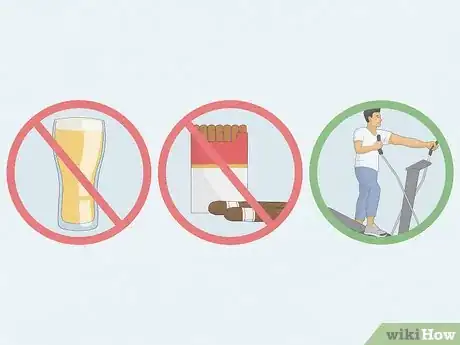
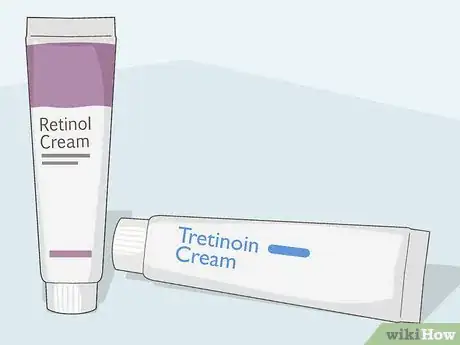

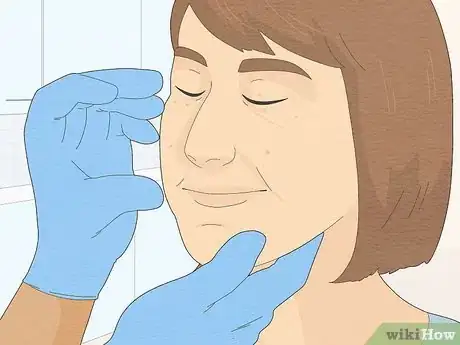
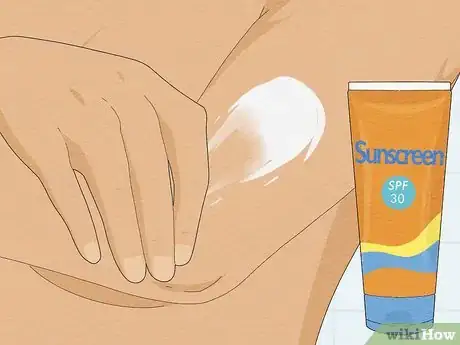
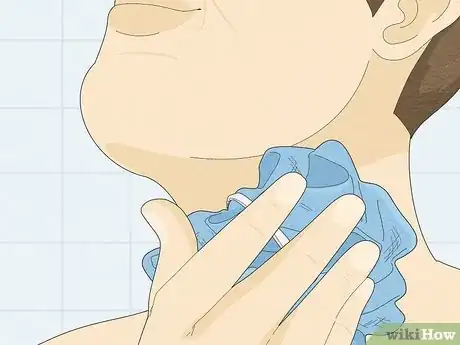





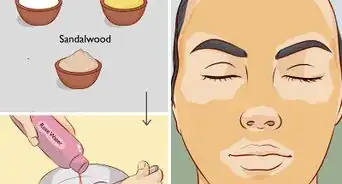



-Step-12-Version-3.webp)















